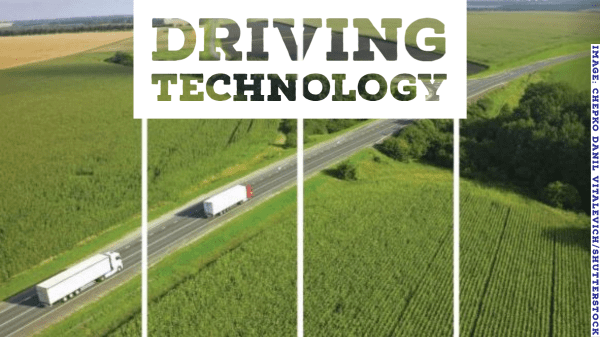Mark Petersen, vice president of temperature-controlled transportation at Eden Prairie, MN-based C.H. Robinson Worldwide, Inc. BB #:100586 is a fan of the accelerometer.
“An exciting technology we’ve seen become more prominent is the accelerometer. It monitors speed, shake, and motion so you can use the information to avert risk. For example, if the accelerometer records a shipment experiencing damage, this would be considered ‘an incident.’
“If shipments are experiencing damage on a consistent basis, the technology could identify these incident clusters more quickly,” Petersen says. “In the future, you could stabilize differently or find another route that will prevent that loss of product. The root cause of the problem can be identified and addressed, identifying patterns of events or lost product faster than ever.”
Ed Treacy, vice president of supply chain and sustainability at Newark, DE-based Produce Marketing Association, BB #:153708 believes the most important innovations in the past couple years revolve around logistics and sensors.
“First, planning software to help create the most efficient way to manage loading and routing. Products have different temperature and humidity requirements—you can’t put strawberries, bananas, and onions in the same load. It’s more complicated than dry loads such as bottled water or paper goods.
“Second,” Treacy points out, is that “sensor technology is getting cheaper and better. We used to track only temperature with a static device, then had to manually extract the data. Now we have sensor technology that can measure humidity, shock, ethylene levels, and GPS location in real time. Like any new technology, if it solves a problem and saves money, it will be adopted.”
Another sore spot is delays.
“Driver detention is a stressor for drivers and carriers alike,” Treacy asserts. “With the advent of ELDs, it became clear just how costly delays are—potentially over $1000 per truck per week.
“Geofencing,” Treacy continues, “is a tool that enables carriers to watch wait times throughout their operations and determine peak hours so they can be avoided, and loads scheduled more efficiently. KeepTruckin introduced its geofencing platform last year, allowing customers to ‘build’ geofences around searchable addresses and have access to a history of wait times at specific facilities.”
Making Tools Affordable
How important is affordability?
According to Amy Childress, vice president of marketing and planning for cargo solutions at Boise, ID-based Emerson Cargo Solutions, BB #:194324 it’s a significant factor during launch.
When introducing Emerson’s tracking and logging devices, she says the company made them not just affordable, but accessible and easy to use—whether a small regional operation or an organization with a large international footprint.
“These single-use and multi-use devices differ from others on the market because they don’t require customers to implement time-consuming and costly return logistics programs to get them back to the point of origin,” Childress explains.
“We’re able to keep the cost of ownership low without the burden of cumbersome reuse programs. We offer a recycling and return program called GO GreenSense for customers who wish to ensure proper battery disposal and component reuse,” she says.
Roger Niebolt is national sales manager for Cargo Data Corporation BB #:205422 in Ventura, CA, which markets single-use real time temperature and location monitoring instruments such as Lightning Real Time.
“These devices are generally less than $50 each and are considered ‘cheap insurance’ for valuable loads of fresh produce,” Niebolt notes. “Real-time monitoring systems also typically include the ability to issue email and/or SMS text alerts if a shipment’s temperatures breach preestablished limits.
“Such alerts enable immediate attention to refrigeration mechanical faults or other issues which imperil the quality and safety of a refrigerated shipment,” he adds. “This reduces food waste, enables transparency, and can eliminate costly claims against carriers.”
“While conventional logging devices are about half the price, many handlers of fresh food products realize that Real Time instruments are worth the negligible added expense. These devices also ensure that the temperature record will be available in case of a bad arrival and potential claims.
“When conventional logging-type instruments are used, they’re often misplaced or never get downloaded. Real Time instruments automatically relay data to the cloud via the cellular data network, which provides true ‘set it and forget it’ reliability.
“With recent telecommunications technology upgrades,” Niebolt says, “real-time temperature and location monitoring devices are moving from legacy 2G/3G connectivity into 4G-Category M technology. The 4G transition is just now beginning, but the technology promises greater geographic coverage and location accuracy compared to 2G/3G technology.”
This is a multi-part feature adapted from the Transportation and Logistics supplement to the July/August 2020 issue of Produce Blueprints.



